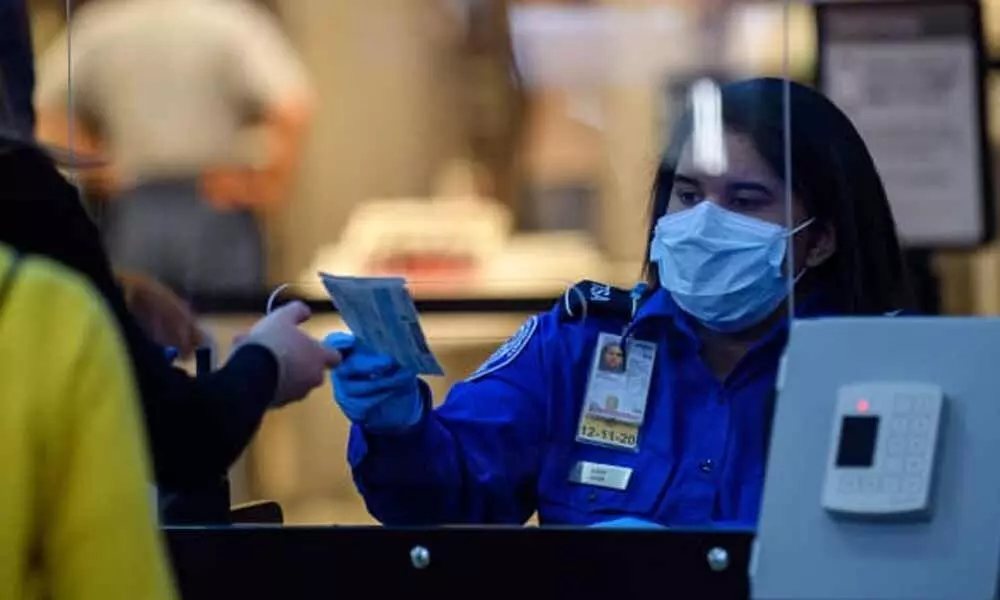Coronavirus Crisis: Can We Really Fly?
 For representational purpose
For representational purposeIf you have decided to fly, check out airline policies onboarding and seating.
Is flying really safe yet? We are worried about this as moms, wives and as a doctor. We've decided not to fly right now. This is our thought process on what to keep in mind and how to reduce the risks.
Why fear flying?
The main concern with flying or travelling by road is sitting within six feet range of an infected person. Don't forget even asymptomatic people can transmit. Risk of infection directly corresponds to a dose of exposure, which is determined by the time exposed and the quantity of virus-contaminated droplets in the air.
Next concern is contact with contaminated surfaces. At the airport, when an infected person infects an armrest, restroom handle or seat tray, though the virus degrades over time, it can survive for hours. You will be under risk of infection if you touch that surface and then touch your mouth or nose.
Think before you book!
While we cannot make air travel 100% safe, there are ways to make it safer. It's crucial to think through the particulars for each trip.
The first approach is to use what occupational health experts call the hierarchy of controls. Firstly this approach focuses on strategies to control exposures close to the source. Secondly, it minimizes the dependency on how much you have to rely on individual human behaviour to control exposure. We should keep in mind that you and everyone around may also be infectious.
Eliminating the hazard is the best way to control exposure. We cannot remove the new coronavirus, but please check can you avoid the trip. Think harder if you are aged or have pre-existing conditions. Can you drive? This would minimize your exposures, mainly if the distance is less than a day of travel.
Decided to fly, what next?
If you have decided to fly, check out airlines' policies onboarding and seating. Federal and state guidance is regularly changing, ensure that you look up the most recent direction from government agencies, airlines and airport.
This may sound bit counter intuitive, consider booking multiple, shorter flights. This will minimize the chances of having to use the lavatory and the exposure duration to an infectious person on the plane.
After you book the ticket, select a window seat. While considering the six-foot radius circle around yourself, having a wall on one of your side would directly decrease the number of people exposed to half during the flight.
I guess @united is relaxing their social distancing policy these days? Every seat full on this 737 pic.twitter.com/rqWeoIUPqL
— Ethan Weiss (@ethanjweiss) May 9, 2020
Also, check out your airline engineering controls designed or practised to isolate hazards—things like ventilation systems, on-board barriers and electrostatic disinfectant sprays.
Operating ventilation system on planes has a very high ratio of outside fresh air to recirculated air. It has almost ten times higher than most commercial buildings. In addition to that, most planes' ventilation systems have HEPA filters. These are 99.9% effective at removing particles that are 0.3 microns in diameter and more efficient at removing smaller and larger particles.
Flying with Kids?
There are special considerations if you are flying with kids. Getting a young child to make wearing a mask and maintaining good hygiene behaviours at home is difficult; when flying, it may be impossible to do so. Children below two years of age should not wear a mask.
Safety measures from the shuttle to seat
You will be touching many surfaces, from checking in, to going through security to boarding. Carry hand wipes to disinfect surfaces like seat belt and your passport. Use plastic zip bags for personal items that others may handle, like your ID. Bring extra bags so that you can put these items in a new bag after you disinfect them.
Wash your hands or sanitize your hands as often as you can. While we all know soap and water is most effective but hand sanitizer is also helpful.
Go to your window seat and be seated. Wear a mask. Make sure your mask fits well. Usage of gloves is not recommended, as that can lead to reduced hand hygiene practices.
Every day, all of us continuously faced with decisions about our comfort with risk. Being prepared with specific knowledge about the airport, airline, and maximizing your protective measures can minimize your risk.














